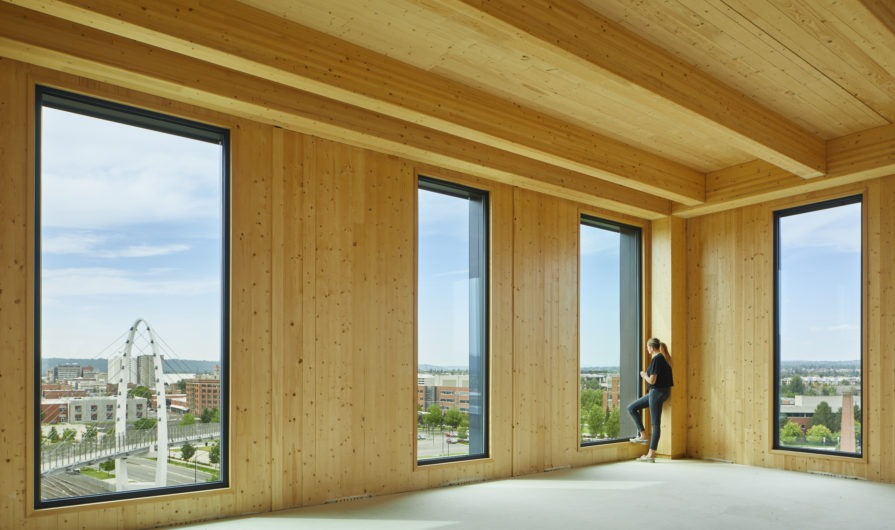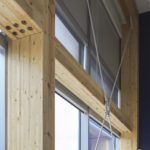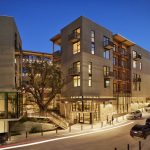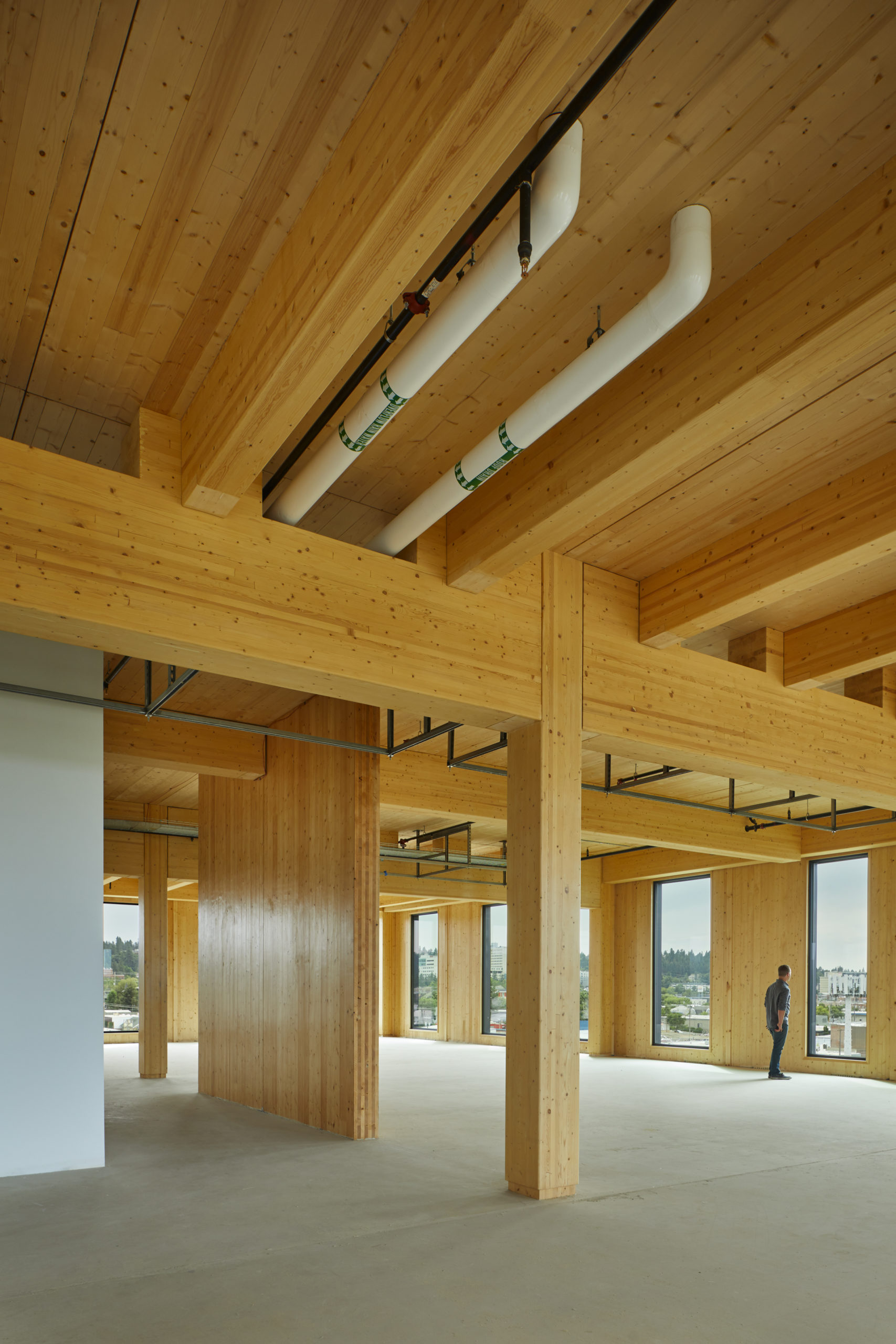
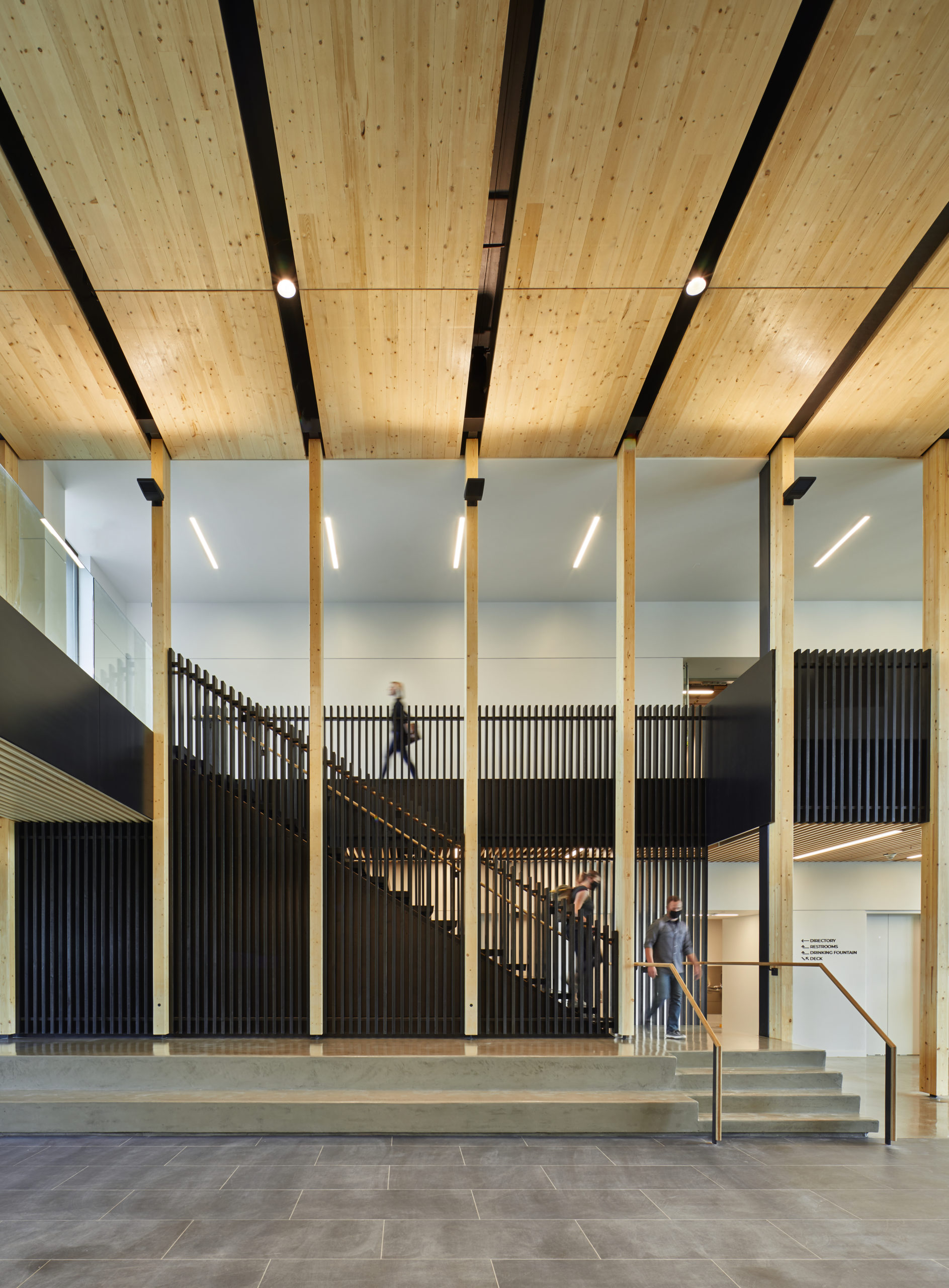
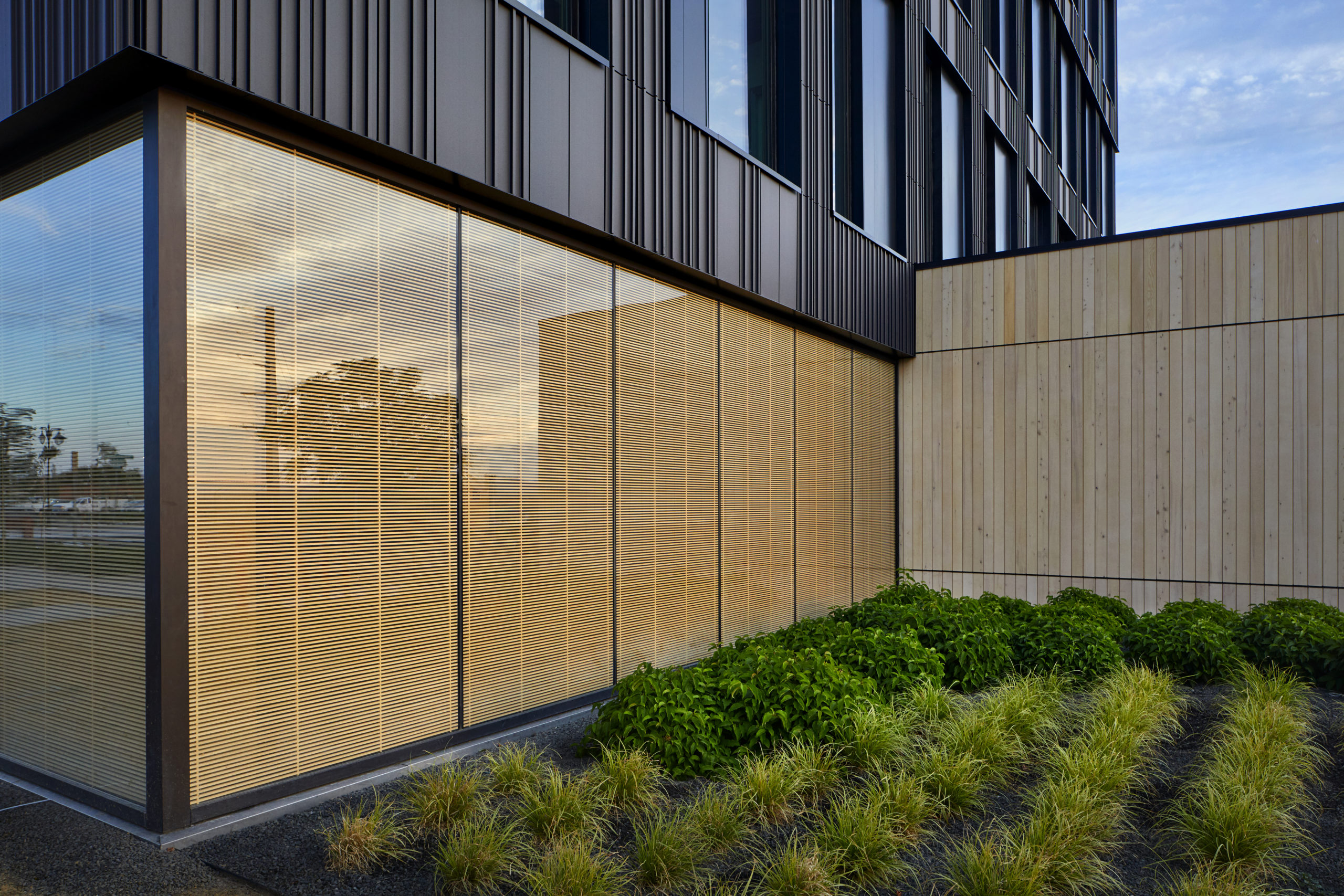
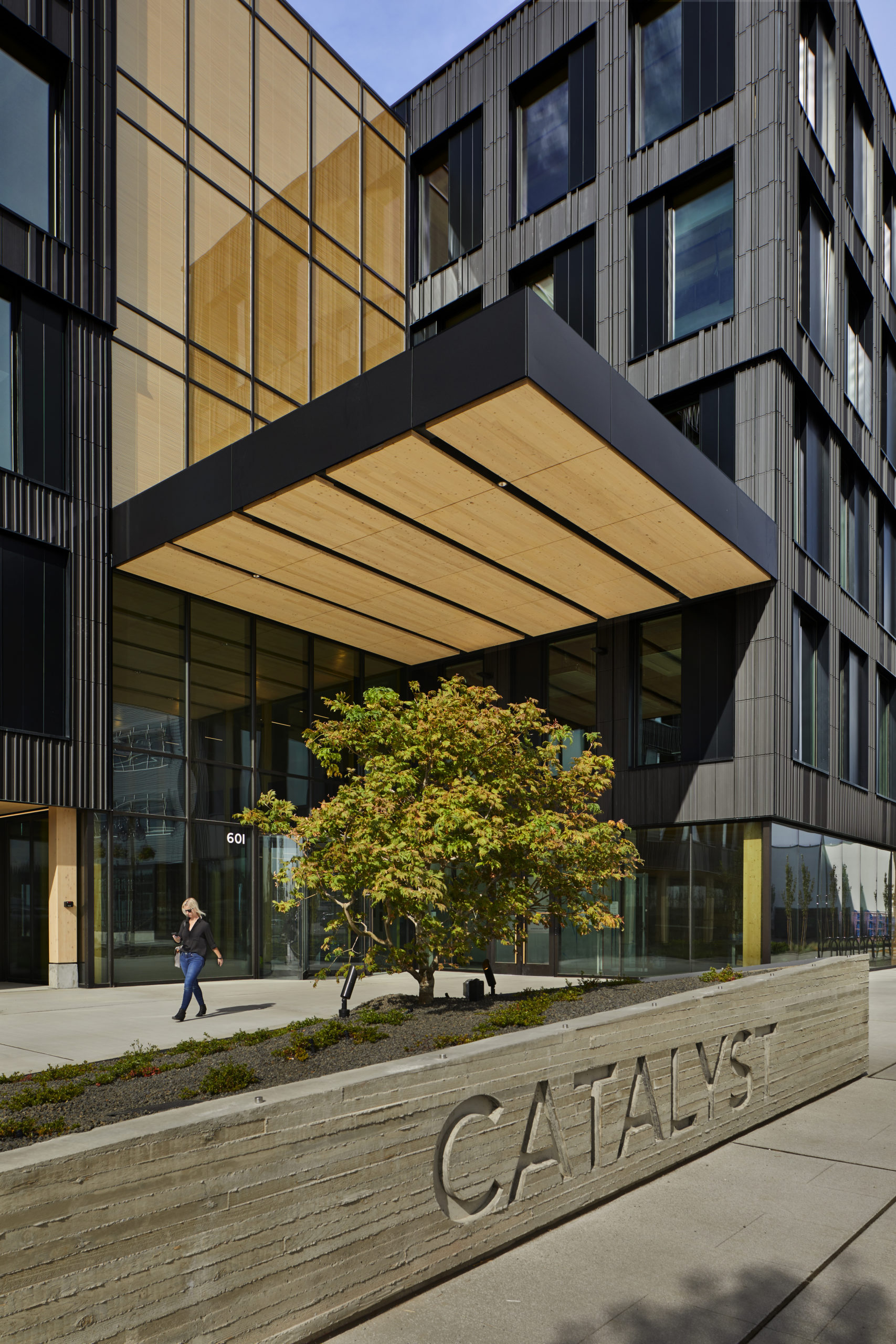
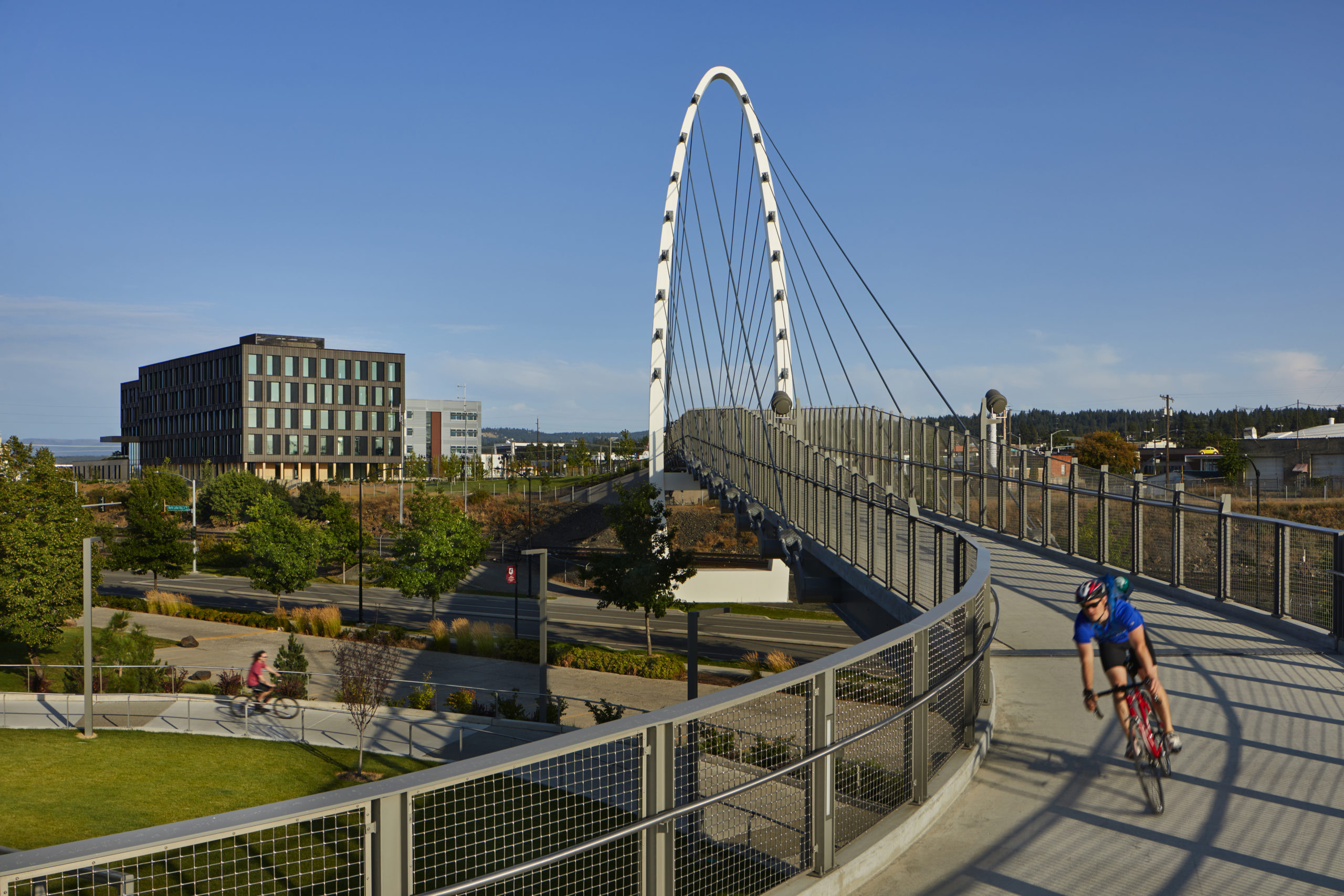
The newest building on the EWU campus is Catalyst, designed by Michael Green Architecture (MGA). The building connects to the University District by way of the Gateway Bridge, a pedestrian bridge that brings together the two main areas of the university.
The MGA team envisioned a mass timber building that would exceed the performance of a comparable concrete and steel building and showcase the aesthetic, energy performance, and environmental benefits of CLT. That vision became a reality in 2020 when Catalyst was completed. It is the first office building in the state to be constructed from CLT. The 165,000-sq.ft., five-story structure uses over 4,000 m3 of wood in the form of CLT and glulam products.
EWU is the main tenant of the building, which is now home to many of its academic programs, including business administration, computer engineering, design, electrical engineering, and marketing. In the near future, Catalyst will also house private industry tenants. This will allow EWU students and faculty to work alongside industry leaders and experts who will provide practical and multidisciplinary learning opportunities. Some of the new industry occupants begin moving in this July, including the Spokane office of McKinstry, who were the mechanical, electrical, and plumbing consulting engineers for Catalyst.
Catalyst also has an eco-friendly carbon footprint. The CLT panels were sourced from local working forests and manufactured at a CLT factory 15 mi. from the site. According to the Canadian Wood Council’s online carbon calculator, the wood volume in the Catalyst building stores 3,718 metric tons of CO2, and, by using wood instead of more carbon-intensive construction materials, the building avoided emitting an additional
1,437 metric tons of CO2. Removing that amount of carbon from the atmosphere is roughly equivalent to taking 1,100 vehicles off the road for a year.
Material use in the building was also optimized. For example, the window cutouts that were created when the envelope panels were manufactured were used as exit stair treads, and Alaskan yellow cedar benches were created from salvaged dead wood.
The building is powered by a solar photovoltaic array and a shared energy eco-district. These systems allow Catalyst to be independent from Spokane’s power grid; this helps prevent power outages. The building’s heating and cooling system is separate from ventilation, which improves efficiency.
Catalyst’s air sealing exceeds Passive House International US standards and the envelope consultant, RDH Building Science, said it was the tightest building they have ever tested.
Catalyst is currently targeting ILFI’s Zero Carbon and Zero Energy certifications.
ARCHITECT
MGA | Michael Green Architecture; Architect of record: Katerra
Vancouver, BC; Seattle, WA
STRUCTURAL ENGINEER
KPFF Consulting Engineers
Portland, OR
GENERAL CONTRACTOR
Katerra
Seattle, WA
Photography
Benjamin Benschneider
Bellingham, WA

